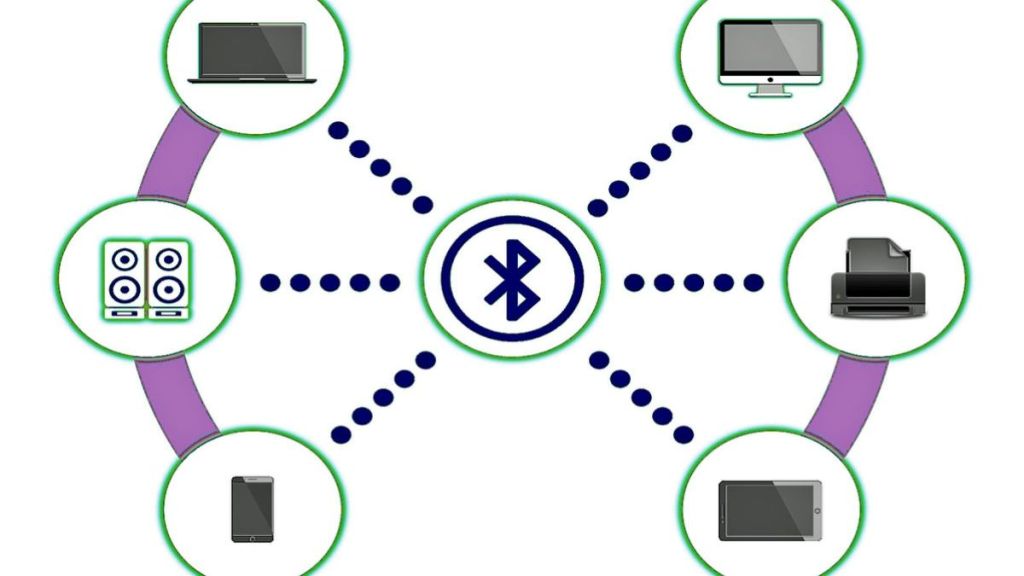
One perfect application for small antennas is Bluetooth. Bluetooth is an ever-popular method of connecting devices together and for streaming information. Bluetooth operates at high frequencies (over 2 GHz) so the antennas required can be small, but are also somewhat sensitive to minor variances in construction and locality. And, peculiarly, there is another factor related directly to the frequency range Bluetooth operates in….
The Water Problem
While the basic principles of antenna design apply to Bluetooth as much as to any other application, it is important to keep in mind the way in which Bluetooth devices are often used.
Many Bluetooth devices end up falling into the category of small, on-person mobile devices. And, to add another interesting twist, Bluetooth frequencies happen to be very close to the resonant frequency of water. Water (being more or less mildly conductive) always affects antenna performance. At its resonant frequency, it absorbs RF energy quite readily. (The frequency your microwave oven operates at is very close to the Bluetooth frequency for this very reason. Energy from the microwave is transferred to water very effectively.)
So how exactly does this effect Bluetooth? As those in the know inform us, a human is largely water. This means that a human tends to be a fairly good attenuator of Bluetooth signal. And, as humans are the ones using the Bluetooth technology, we see we can have some interesting problems.
Bluetooth and Personal Devices
As with all personal devices, the proximity of the antenna to the person will tend to play around with performance. For this reason, a Bluetooth antenna needs to be broadband enough so as not to suffer in performance whether close to an individual or away from one.
Furthermore, since the Bluetooth energy is going to be absorbed somewhat by the person using the device, we need to ensure coverage. Besides being a waste of battery power, increasing the power level of the mobile device to improve coverage is not a great solution; there is a limit to how much RF you can blast a person with legally.
The best solution is an efficient antenna. Fortunately, Bluetooth frequencies do not require very large antennas, so it is easier to increase the efficiency. Unfortunately, the size of the package for most personal devices keeps shrinking and shrinking, so size constraints are often a challenge.
Successful Bluetooth Antenna Design
All the problems of a Bluetooth antenna design can be more or less overcome, but care in designing is required.
A successful Bluetooth antenna should be reasonably broadband, so as not to be terribly detuned by proximity (or lack of it) to a person.
A Bluetooth antenna also should be efficient; the small amount of energy available due to safety and battery size constraints is all too easily lost.
However, such an antenna can be designed. We find simulation software, such as Altair FEKO, to be a helpful starting point for such applications, as it allows for easier designing around various factors the antenna will be exposed to in actual use.
You must be logged in to post a comment.